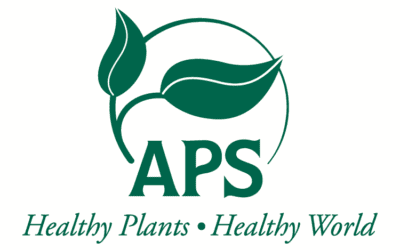Hosted by the American Phytopathological Society (APS) and organised by Dr James Woodhall and Prof. Juliet Marshall (University of Idaho), and Prof. Mary Burrows (Montana State University), this workshop covered a range of practical considerations and case studies from researchers across the US and the UK.
First Dr Lindsey Thiessen (North Carolina State University) discussed spore trapping to monitor powdery mildew in grapes (Erysiphe necator), which causes reduced yield and quality. She covered the limitation of visual scouting and how spore sampling could improve detection when combined with lab tests such as PCR and newer portable techniques like Loop mediated isothermal amplification (LAMP). Using this approach in 2013 and 2014, her team reduced the number of fungicide applications without negative impacts. She has also used these methods to examine for Strobilurin fungicide resistance in powdery mildew at the field level, to better inform fungicide programs.
Next Prof. Jon West (Rothamsted Research) gave the pros and cons of the many spore samplers available. He examined the use of spore sampling, showing how different particles sizes of viruses (0.1-0.3 µm), bacteria (1 µm) or fungi (1-50 µm) impact the methods used. Similarly, the purpose should also be considered when selecting the most effective methods/tools. His talk proved a useful introduction to the sector and was also useful to examine the various analysis methods used from simple microscope morphological analysis of sticky tapes through to DNA based diagnostics and even optical/laser identification from air streams.
Dr Walter Mahaffee (USDA ARS) used computer modelling and diagrams to explain the importance of trap placement to sample crops. He examined how air currents change depending on the environmental conditions, objects near to fields and even the crop structure itself. His simulations showed how air currents across a vineyard create rolling waves, resulting in 75% of particle remaining within the lower crop canopy or become deposited onto the ground while 25% ‘escaped’ to be carried further across a field or local area. His team is using these models to best elucidate sampler location along with interpreting the location of spore release within the crop.
Dr Jeremiah Dung (Oregon State University), looked at practical considerations of trapping for regional research programs. He examined the impact of sampling duration, cost and ease of use/maintenance when developing regional monitoring programs. He described his research in ergot infection and dispersal in grass seed production and particularly Kentucky bluegrass. This theme of wider disease monitoring was further discussed by Dr Alison Robertson (Iowa State University) who described the development of the National Predictive Modeling Tool Initiative (NPMTI). This program aims to help forecast key diseases and mycotoxin contaminants in row crops such as Cotton, Maize and Wheat at a national level.
If you have any questions about working with CHAP, please send us an email using the enquiries form at the bottom of our homepage.












